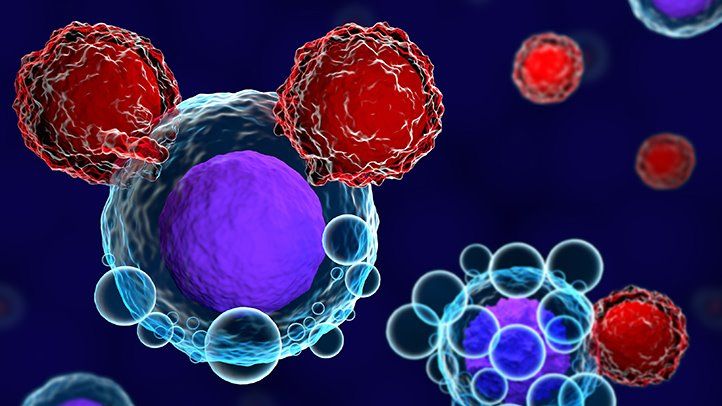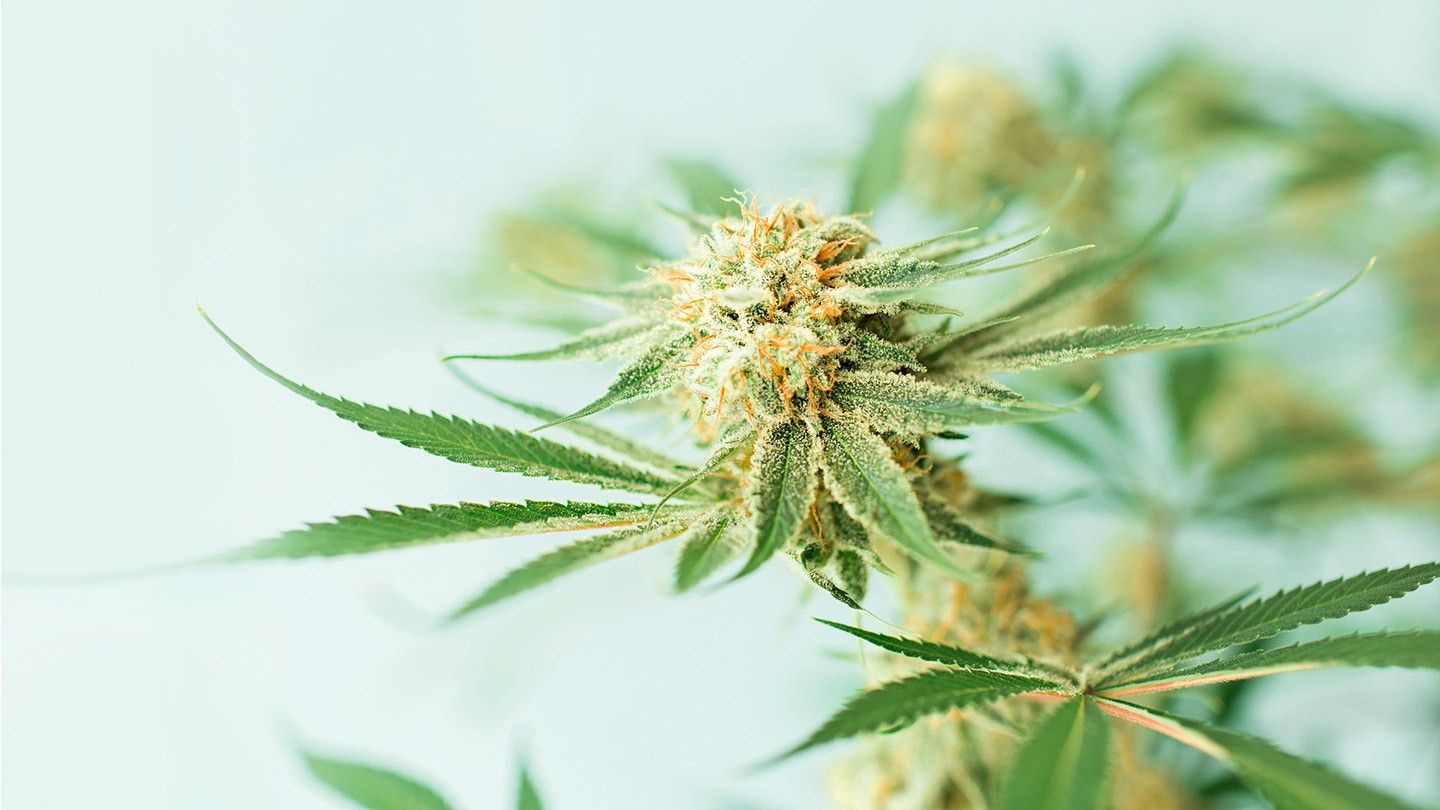Leukemia is a type of cancer that affects the blood cells and bone marrow, a soft spongy tissue inside the bones where blood cells are made.
There are several forms of the disease. Some are more common in adults, while others impact children.
Your outlook will depend on what type of blood cells the cancer started in and whether your leukemia is considered acute or chronic.
How Does Leukemia Happen?
Leukemia happens when blood cells formed in the bone marrow change into a type of leukemia cell rather than a blood cell. Over time, leukemia cells crowd out healthy blood cells. The rate at which leukemia grows depends on the type of the disease you have. (1,2)
The Blood Cells That Circulate in Your Body
Your blood contains three key types of cells:
- White blood cells These cells help your body fight infection and other diseases. Some types of white blood cells include lymphoid cells and myeloid cells. (3,4)
- Red blood cells Red blood cells are made in your bone marrow and help carry oxygen from the lungs to the rest of your body. They usually live for about 120 days before dying. (4)
- Platelets Platelets are small cell fragments produced in your bone marrow that help your blood clot. (4)
When you have leukemia, your body makes many abnormal blood cells, usually white blood cells. Over time, there aren’t enough healthy white blood cells to fight infection, red blood cells to carry oxygen, or platelets to help your blood clot. (5)
Leukemia Can Take Several Forms
Leukemia is classified by how quickly it grows and the type of blood cell it affects.
Acute vs. Chronic
There are two main categories of leukemia:
- Acute leukemia With acute leukemia, the abnormal blood cells that form are immature. This type of cancer typically grows and worsens quickly. It usually requires aggressive treatment.
- Chronic leukemia Chronic leukemia worsens gradually over time. It involves more mature blood cells that grow more slowly. Some people with chronic leukemia don’t have symptoms for years, and some never require treatment. (2)
Lymphocytic vs. Myelogenous Leukemia
Leukemia is further classified by the type of white blood cell that gives rise to the cancerous cells. Here, too, there are two main categories:
- Lymphocytic leukemia Lymphocytic leukemia affects the lymphoid cells (lymphocytes), which are a type of white blood cell. T cells and B cells make up most of the normal lymphocytes that protect you from infection, and lymphocytic leukemia can be either T or B cell leukemia. The cell type dictates the therapy your doctor suggests.
- Myelogenous leukemia Myelogenous leukemia affects myeloid cells, which mature into white blood cells (such as those that become neutrophils, the white blood cell that helps protect us from bacterial infections and which makes up pus), red blood cells, or platelets. (2,6)
Main Types of Leukemia
There are four main types of leukemia, which are grouped based on which blood cells they affect and whether they are acute or chronic:
- Acute lymphocytic leukemia (ALL)
- Acute myelogenous leukemia (AML)
- Chronic lymphocytic leukemia (CLL)
- Chronic myelogenous leukemia (CML)
Rarer forms of leukemia (such as hairy cell leukemia) and preleukemic diseases (such as myelodysplastic syndromes and myeloproliferative disorders) also exist. A subset of the preleukemic disorders progress to AML. (2)
How Do Doctors Stage Leukemia?
Staging cancer is a way for doctors to identify the extent of the disease. Most cancers are staged by the size and spread of the tumors. Because leukemia occurs in blood cells, it’s staged differently.
Staging leukemia depends on the type you have, but doctors often consider the following factors when determining the stage and prognosis:
- Your white blood cell or platelet count
- Your age
- Whether you have a history of blood disorders
- If you have bone damage
- If you have an enlarged spleen or liver
- If you have chromosome mutations or abnormalities
- If you’ve had chemotherapy for a different cancer in the past. (7)
Finding a Doctor to Treat Leukemia


CAR T Cell Therapy Enhances the Human Immune Response to Cancer
You’ll need to see a specialist to treat your cancer.
A hematologist-oncologist is a doctor who treats people with blood cancers. Pediatric hematologist-oncologists are also available to help babies, children, and adolescents with leukemia.
You can find a blood cancer specialist by asking your primary care physician for a recommendation or by contacting your community cancer center.
Additionally, the Leukemia & Lymphoma Society offers several resources to help you locate a specialist in your area. (8)
You might want to ask the following questions when deciding on a doctor:
- Is the doctor licensed and board-certified?
- Is the doctor a member of any professional societies?
- How much experience does the doctor have in treating your type of leukemia?
- How long will it take to wait for appointments?
- What is the support system like? Will nurses and case managers be available to assist you?
- What’s the best way to contact the physician?
- Will my insurance company cover the treatment I receive under this doctor’s care? (8)
Prevalence and Survival
According to the National Cancer Institute, about 60,300 people are expected to be diagnosed with leukemia in 2018. (9)
The Leukemia & Lymphoma Society estimates that 363,794 people in the United States are living with some form of leukemia. (10)
About 1.5 percent of men and women will be diagnosed with leukemia at some point during their lives. (9)
Since 1960, the five-year overall survival rate for people with acute leukemia has more than quadrupled. Between 1960 and 1963, the five-year survival rate was just 14 percent. From 2006 to 2012, it jumped to 62.7 percent. (10)
It’s important to note that your particular prognosis will depend on the type of leukemia you have and how aggressive it is. Some forms of the disease have a better outlook than others
Who Gets Leukemia?
Leukemia occurs more often in adults who are older than 55 years of age. But it’s also the most common cancer in children younger than 15. (4) ALL is the most common type of childhood cancer. It typically affects kids ages 3 to 5. Boys are diagnosed with ALL at a slightly higher rate than girls, and the disease is most common in Hispanic children. (11)
With the exception of ALL, the risk for most types of leukemia typically increases with age. Men are more likely than women to develop CML, CLL, and AML. (12)
Causes and Risk Factors of Leukemia
The exact cause of leukemia isn’t known, but certain risk factors can up your chances of acquiring the cancer.
Children with Down syndrome are up to 20 times more likely to develop ALL. Other inherited conditions, blood disorders, and even some common viruses, may raise a person’s risk of leukemia.
Environmental triggers are another probable culprit. Exposure to radiation, chemicals, pesticides, and cigarette smoke are linked to specific types of leukemia. Being treated with certain chemotherapy drugs can also increase your likelihood of having the cancer.
While there’s no way to completely evade leukemia, avoiding preventable risk factors may help you lower your chances of developing the disease.
Learn More About Leukemia's Causes
Signs and Symptoms of Leukemia
Signs and symptoms vary depending on the type of leukemia you have. Some people with chronic leukemia don’t have symptoms for a while, whereas those with acute forms of the disease usually notice problems much sooner. Leukemia is sometimes hard to spot because the signs are vague and not specific.
Many of the general symptoms that people with leukemia experience overlap with those of common illnesses:
- Fever
- Night sweats
- Unexplained weight loss
- Fatigue
- Loss of appetite
If the cancer affects your blood cell counts, spreads to other parts of your body, or collects in your liver or spleen, you might experience other issues.
See your doctor if you have any complaints that are unusual, severe, or don’t go away. Your physician can help you find out what’s wrong and determine if your symptoms are caused by leukemia.
Learn More About Leukemia Symptoms
Types of Leukemia
Some types of leukemia grow quickly, while others spread slowly. Also, different kinds of the disease affect different blood cells in your body.
The type of leukemia you have will determine your treatment options and prognosis.


Many Cancer Patients Say Marijuana Relieves Their Symptoms
There are rare forms of the disease, too, as well as different subtypes.
Your doctor can run certain tests to help determine what type of leukemia you have. Being educated about your specific type of cancer can empower you to make better decisions about your care.
Learn More About Leukemia Types
Acute Myeloid Leukemia: A Common Form of Leukemia
Acute myeloid leukemia is a fast-growing cancer that begins in the bone marrow — a spongy tissue inside certain bones. It affects myeloid cells in the bone marrow, which normally give rise to red blood cells, white blood cells, and platelets. Typical symptoms of the disease include fatigue, weakness, pale skin, shortness of breath, and bruising. Treatments range from chemotherapy and stem cell transplantation to targeted therapies.
Learn More About Acute Myeloid Leukemia
Treatment and Medication Options for Leukemia
Treatment options vary and depend on the type of leukemia you have, your age, your health status, and how advanced the cancer is.
Common approaches include the following treatments:
- Chemotherapy
- Radiation
- Targeted treatment
- Biological therapies
- Stem cell transplantation
In some cases, doctors will recommend a “watch and wait” approach until the cancer grows more.
Alternative therapies can help you deal with the side effects of harsh treatments. Clinical trials are also an option if you want to try an experimental therapy that isn’t available as a mainstream option.
Choosing a treatment regimen isn’t always easy. That’s why it’s important to work with a doctor you trust.
Learn More About Leukemia Treatment
Resources We Love
If you’ve recently been diagnosed with leukemia, it’s important that you and your family have access to resources that can help you understand, cope with, and recover from your condition. Here are Everyday Health’s most recommended organizations, articles, and websites that provide information and support.
Learn More About Leukemia Resources
Resources We Love


Editorial Sources and Fact-Checking
- Leukemia. Leukemia & Lymphoma Society.
- Leukemia. Mayo Clinic. March 13, 2018.
- NCI Dictionary of Cancer Terms: White Blood Cell. National Cancer Institute.
- Leukemia — Patient Version. National Cancer Institute.
- All About Leukemia. OncoLink. March 6, 2017.
- Leukemia. American Society of Hematology.
- Leukemia Stages. Cancer Treatment Centers of America. February 22, 2017.
- Choosing a Blood Cancer Specialist. Leukemia & Lymphoma Society.
- Cancer Stat Facts: Leukemia. National Cancer Institute.
- Facts and Statistics. Leukemia & Lymphoma Society.
- Acute Lymphoblastic Leukemia (ALL). St. Jude Children’s Research Hospital.
- Leukemia Risk Factors. Cancer Treatment Centers of America. October 9, 2015.

































